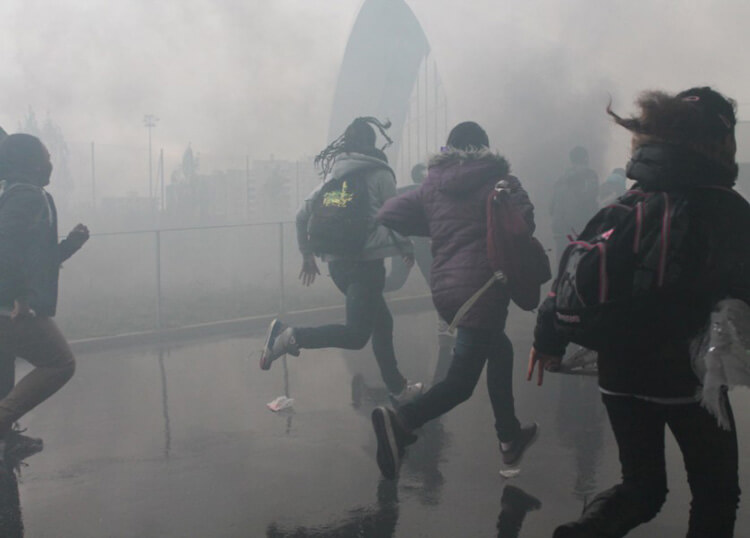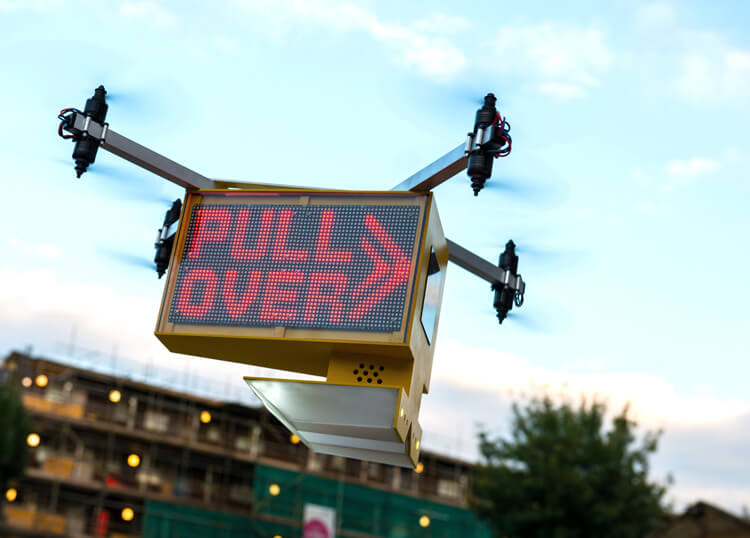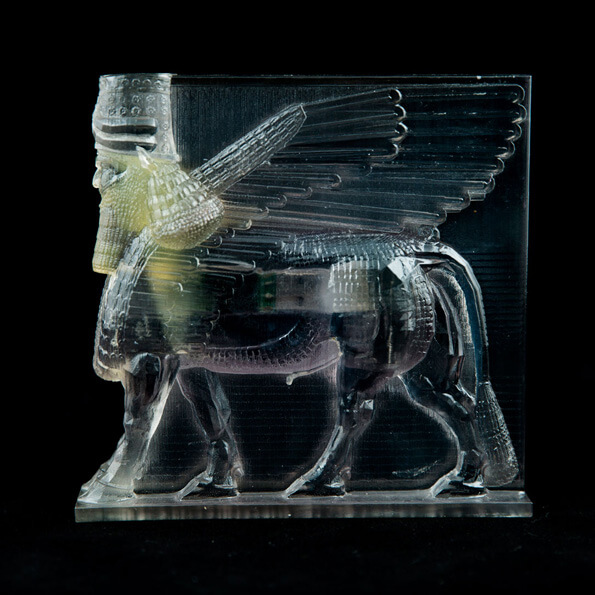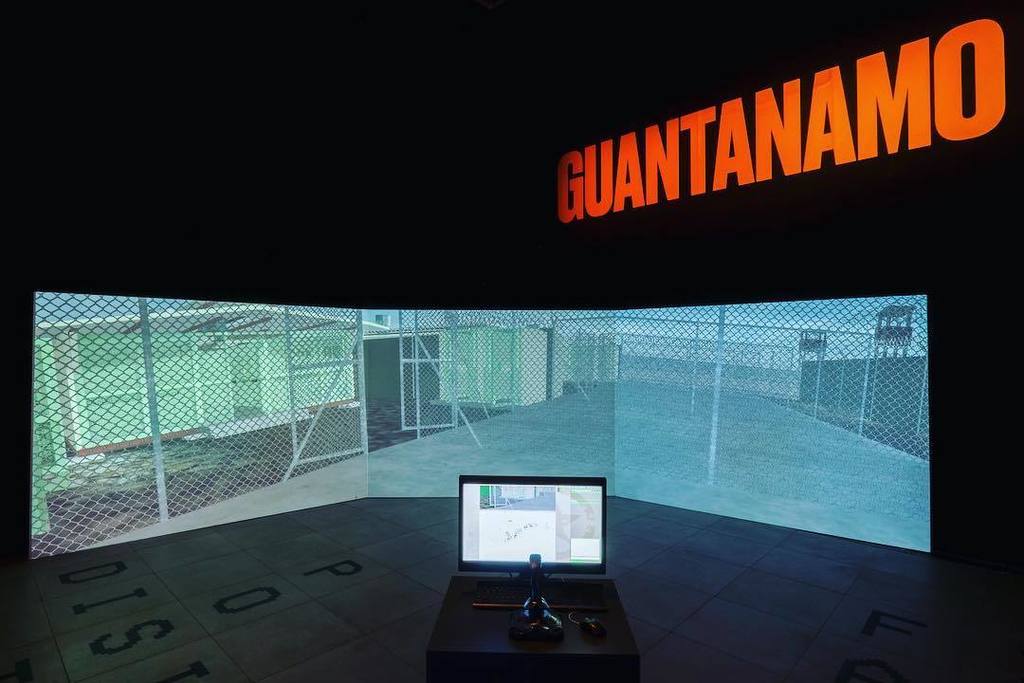Words by Eran Tsafrir

Politics is poisoned. Propaganda, lies, manipulations, alt-facts, fake news, selective hacks and leaks are the hallmarks of the politics of our age. Appeals to emotion and personal belief, and the dismissal of proven, evidence-based facts, objective truths, and the views of experts, are now at the heart of political debate and the exercise of political power.
This mutant form of democracy is quickly befouling all aspects of life. Mere opinions, subjective points of view are presented as equal to assertions backed up by provable facts. The boundaries between fact and fiction, between right and wrong, are muddled, entering the murky terrain of myth. Our ability to make decisions on sound foundation is compromised, undermining the very idea of freedom.
Of course the use of fallacies and the suppression of truth by politicians are nothing new; they are leitmotifs of politics since time immemorial. But technology, the Internet, the velocity of social media have turned these into a powerful weapon in the hands of populist politicians operating within the arena of liberal democracies. They bewitch and mobilise masses – the ‘forgotten’, those who feel abandoned by the ‘establishment’ (whatever the term means), those who are bewildered by a technology-driven interdependent globalised world.
In times of crisis we turn to priests, shamans, prophets, modern oracles… we turn to artists, and to art. How much of this is fiction., which opens at the Foundation for Art and Creative Technology (FACT), Liverpool, on 2 March (and continues until 21 May) is a timely curatorial and artistic endeavour.
How much of this is fiction. seeks to decipher, demystify a world increasingly governed by fake news and post-truth politics, and explore the radical shift in the boundary between fiction and reality in public discourse. Curated by Annet Dekker (Netherlands) and David Garcia (United Kingdom), in collaboration with Ian Alan Paul (United States), the exhibition features politically inspired technology-based artworks and projects that use deception in all its forms. There is a promise of trickery, hoaxes, hacks and rushes to reveal the hidden workings of power structures and the possibility of alternative futures.
Exhibition highlights
How much of this is fiction. is designed by Ruben Pater (Netherlands), whose work is grounded in a strong activist history, and in particular in relation to the ways in which the media covers moments of political unrest. Pater’s graphic and spatial design brings to the fore ideas of hoax, political protest and acts of obfuscation.
The exhibition is arranged in two zones. Zone 1, which is entitled ‘The Newsroom’, looks into hacks and fabricated ‘news fiction’ where deception or provocation has interfered with the media landscape and has opened it up as a platform for discussion and debate.
In Daily Paywall (2014 – ongoing) (printed materials, videos, newspaper, takedown letter) artist Paolo Cirio (Italy) who uses a code to pirate and monetise online content, and by this to inform the public about socio-economic issues.
After signing up for paid accounts with mainstream news sources, Cirio created a code that automatically pulled entire articles from these sites and reposted them onto dailypaywall.com.
Tens of thousands of articles were appropriated from the websites of Wall Street Journal, Financial Times, and The Economist. Cirio then redistributed the pay-per-view articles for free. Readers could earn money for responding correctly to quizzes about featured articles, and journalists were invited to claim compensation for their writing. Donors could offer any amount to crowdfund the system.
In Newstweek (2011) (video), Julian Oliver and Danja Vasiliev (New Zealand, Germany, Russia) created a technical device that enables online news content manipulation via wireless hotspots. Built into a small and innocuous wall plug, the device appears as part of the local infrastructure, allowing writers to remotely edit news read without the knowledge of users (in effect, facilitating the creation of ‘fake news’ as part of an artistic drive).
[V]ote-Auction (2000) (video) by UBERMORGEN (Switzerland/Australia/United States) uses the Internet to subvert democratic processes. [V]ote-Auction was a website that offered voters to sell their vote to the highest bidder during the US presidential elections 2000, Al Gore v. G.W. Bush, to highlight the links between democracy and capitalism. The project triggered a media explosion, reaching millions of people through print, television, radio, and the Internet. Legal fights with US courts and intelligence agencies followed.
Zone 2 of How much of this is fiction. presents a series of interconnected installations that look into the way trickster ethos is used to address political themes.
In Material Speculation: ISIS, 2015 – 2016 (installation with 3D objects and downloadable content) Morehshin Allahyari (Iran/United States) uses 3D printing and digital technology as a resistance tool and a process for repairing history and memory.



The self-proclaimed Islamic State (ISIS) has destroyed, damaged and looted numerous important cultural heritage sites and objects in Iraq and Syria since 2014. UNESCO Director-General branded these actions as a war crime, a form of cultural cleansing, and an attempt to deprive people of their knowledge, identity and history.
Material Speculation: ISIS, 2015 – 2016 reconstructs 12 selected (original) artefacts (statues from the Roman period city of Hatra and Assyrian artefacts from Nineveh) that were destroyed by ISIS in 2015. The project goes beyond object reconstruction by including a flash drive inside the body of each 3D printed object.
The information on these drives includes images, maps, pdf. files, and videos, detailing the artefacts and sites that were destroyed. Sourced by an intense research process involving archaeologists, historians and museum staff (from Mosul Museum to archaeologists and historians in Iraq and Iran) the 3D printable files are archived and made available online for download and use by the public.
“La Révolte de Tremblay en France” (2017) (cinematic film trailer) is a new commission by HeHe (France/Germany/United Kingdom) that seeks to reveal the artifice and falsehood that the media perpetuates.
The work depicts a revolt of school children. Tremblay is a suburb of Paris that is often portrayed by the media as a suburban dystopia rife with excessive police presence, burning buses and deteriorated residential bars. In reality, the new College Pierre de Ronsard (where the revolt takes place), is a school that is comfortably installed in a residential environment and differs greatly from the hyped media fantasy that haunts the collective imagination.
Working with the college students, and using simple filmic means and special effects, HeHe recreate and replay scenes of social disorder: an aesthetic appropriation of a myth.
Zone*Interdite (2006) (3D walkthrough via video and interaction station with website) by Wachter & Jud (Switzerland/Germany), is concerned with the power of imagination and the ability of individuals to perceive reality independently, free of myth or propaganda that affect the real and virtual worlds.
The Internet is generally seen as an open, limitless space for communication beyond all borders (further substantiated by participation platforms like Wikipedia or YouTube). But some seemingly free online spaces are apparently heavily controlled by censorship and exclusion.
Wachter & Jud’s open-source projects uncover forms of censorship of the Internet in an attempt to undermine the concentration of political power and even resolve dependency on infrastructure.
Zone*Interdite (French for: ‘restricted military zone’) places together a map of restricted military areas and makes such restricted areas accessible through virtual walkthroughs. The work also incorporates crowdsourced information and insight, and freely available data (e.g. Google Maps). Visitors are invited to improve the project with their own Internet searches.
The EU Bird Migration Authority (2012) (printed materials, website, video) by Ian Alan Paul (United States) is a fictional EU agency with a primary mission of tracking, management, and control of non-native bird species in the EU member states. This includes the live tracking of migrating bird flocks using state-of-the-art satellite and atmospheric sensor technologies, catch-tag-release programmes, bird population management, flock relocation, and disease monitoring.
The website of the agency includes information on the agency’s mission statement, programmes, history, reports, routes, research, staff and employment.
The project is designed to investigate the politics and ethics of the policing of human migration, and to explore the conceptual divide between human and animal migrants. Much of the materials used in the project are repurposed/remixed media from the Frontex (the EU Border and Coast Guard Agency) archives.
Drone Aviary (2015) (video) by Superflux (India/United Kingdom) investigates the social, political and cultural potential of drone technology as it enters the civil space. Through a series of installations, films and publications, the project aims to give a glimpse into a near-future city where people co-habit with ‘intelligent’ semi-autonomous, networked, flying machines.
The project features five drones. Each drone is designed to be symbolic of the convergence of social and technology trends with specific tasks and functions that are gaining popularity amongst drone enthusiasts and entrepreneurs. There is ‘Madison, The Flying Billboard’, ‘Newsbreaker, The Media Drone’, ‘Nightwatchman, The Surveillance Drone’, ‘RouteHawk, Traffic Management Assistant’, and ‘FlyCam Instadrone’.
In a film made by Superflux as part of the project, the drones become protagonists, revealing fleeting glimpses of a city from their perspective as they continuously collect data and perform tasks. The film hints at a world where the ‘network’ begins to gain physical autonomy, moving through and making decisions about the world, influencing our lives. A speculative map highlights where physical and digital infrastructures merge as our cities become the natural habitat for ‘smart’ technologies from drones and wearable computers through to driverless cars.
With the advance of drone technology, and with governmental bodies such as the European Commission working on a regulatory framework for the civil use of drones, these near future scenarios are becoming ever more plausible, and the project highly relevant to an assessment of their desirability.
‘Tactical Media’, public programme and FACTLab
Many of the projects that are featured in How much of this is fiction. are related to ‘Tactical Media’, an influential movement that flourished in the 1990s and fused art, political activism and experimental use of digital media.
The political importance of these DIY interventions has been hotly disputed. Some view them as a distraction from engagement with “real” politics, while others regard them as a valid, important weapon in the battle for the “social mind”.
A public programme of talks, workshops, live performances, exhibition tours, and film screenings will be held by FACT alongside the exhibition in order to facilitate discussion about ‘Tactical Media’ interventions and other relevant issues of public concern. Among these there are issues such as the roles and risks of hoaxes, and what the organisers refer to as the urgent need to develop a more “populist language” for progressive politics.
FACTLab, FACT’s experimental space for collaborative learning and practice-based research, will host a series of informal ‘art and knowledge’ workshops with some of the artists, focusing on rapid prototyping, Internet literacy, and the deployment of maker and coding skills in the service of online and offline activism.
Art as a trigger for political and social change
Progressive politics and liberal media appear impotent in the face of the simplicity and clarity of post-truth era messages. These old gatekeepers are bewildered by the power of lies, the false promise of a nostalgic return to old, mythical utopias, and of a quick imaginary fix to the deep-rooted illnesses of a complex globalised reality.
Algorithm-based fact verification technology is still futile. Constrained by human-scale fact-check processes, these brokers of truth cannot combat a network scale effectively, fast-pace dissemination of lies, opinions disguised as objective facts, and ultimately of demagogy.
Further, they fail to present an alternative, a positive forceful argument, or a compelling counter-narrative. It is therefore left to us, individuals, to engage in a demanding struggle for a world that distinguishes provable facts and truths from fiction and myth and, by this, to protect democracy and the fundamental principles of justice, the rule of law, equality, and freedom.
Art that uses socio-political contexts as material, like clay (‘contextist art’), can draw attention to deep-rooted problems in our society. It can trigger debate and mobilise people to act, especially when stirring the senses.
How much of this is fiction. offers us an opportunity to reflect on the nuts and bolts of a mutation of power mechanisms that seriously threaten the prevailing political and social order. It provides us with a space to contemplate and meditate on how we can concoct an antidote to the post-truth poison that contaminates our lives.






